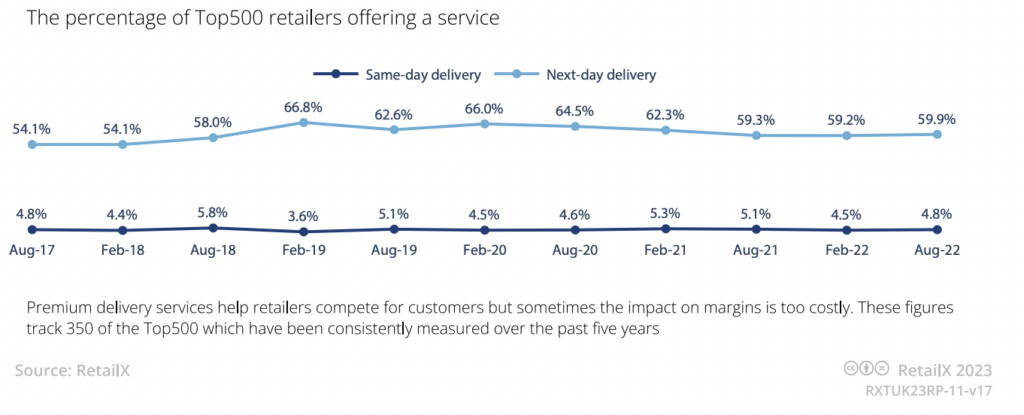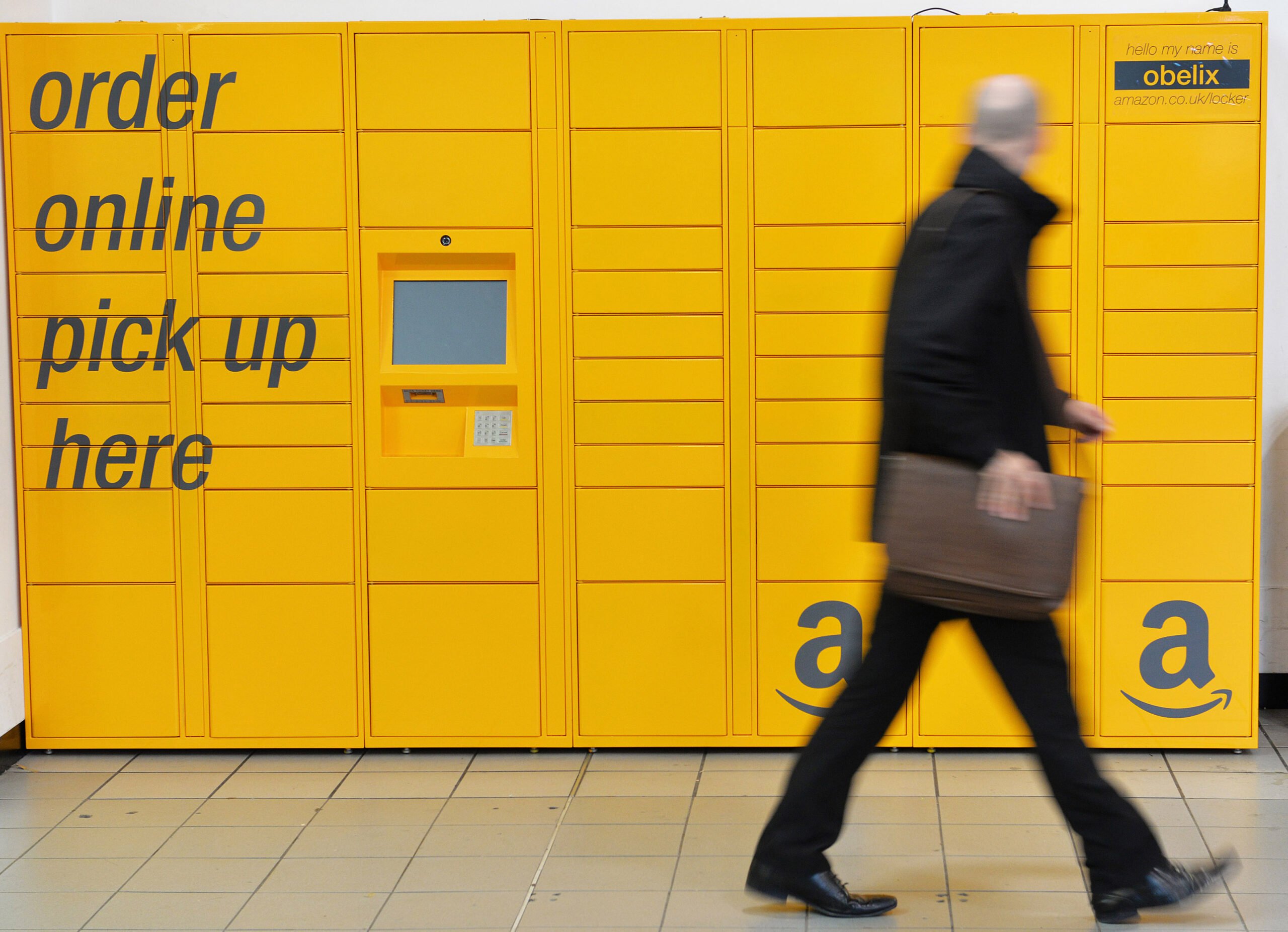RetailX’s latest UK Top500 report looked at the Operations Value Chain, and assessed how effective Top500 retailers are in putting their wares in front of as many people as possible. While it found an increasing number of UK retailers are offering collection services to bring multichannel customers in store, it also recorded a fall in those offering free delivery.
The research found the average retailer offers collection from 1,300 pick-up points, which may include stores as well as third-party pick-up points. That’s 11 more than last year, while the median retailer offers collection from 110 (-43).
Multi-sector stores tend to have the most collection points – the median retailer in this category has 986 – followed by retailers and brands selling consumer electronics (389), DIY and trade equipment (300), and flower and gift retailers (205). At the other end of the scale, marketplace hosts offer collection from a median of 33 pick-up points.
Fewer than 1% of Top500 retailers have their own instore collection lockers, a figure unchanged on last year. Having branded collection lockers can boost the physical presence and convenience for online retailers. Marketplaces (5%) supermarkets, multicategory retailers and retailers selling DIY and trade supplies and maternity and children’s products (all 3%) operate lockers at a slightly higher rate.
How do retailers use convenient delivery and returns options to make customers more likely to buy?
A combination of delivery that is either always free or free above a minimum order value, with easy and convenient returns, is likely to lead to relatively high levels of sales since barriers are removed. Given that there’s a statutory right to return an item within 14 days, it’s likely that making it easy to send something back will boost sales, since most shoppers will not return their online orders. We look at how Top500 retailers deploy the tactics that are likely add value through operations.
Free delivery
The proportion of retailers offering free delivery on all orders has fallen from 20% last year to 18% this year. More than a third of retailers and brands selling consumer electronics (37%) and jewellery (35%) continue to deliver all orders for free. Less than 1% of those selling maternity and children’s products and flowers and gifts do so.
Free delivery with minimum spend
More than half (+1 percentage point (pp) to 51%) of retailers now offer free delivery when retailers spend a minimum amount, with retailers selling maternity and children’s products (82%), hobby supplies (73%) and cosmetics (64%) most likely to do so. Marketplace hosts (29%) and those selling flowers and gifts (34%) are least likely.
Premium delivery options
Premium delivery options cost shoppers more. The decision that retailers and brands make is whether offering options such as same-day and next-day delivery will add value to their businesses – and for their customers – or whether it will have an impact on profit margins, especially when next-day delivery is offered as standard or even for free. As the chart shows, a small minority of retailers offer same-day delivery, while there’s a declining trend in the proportion that offer next-day delivery.

Return via pick-up from the house
6% of Top500 retailers will organise a courier pick-up from the house for unwanted items. That’s the same as last year, with retailers selling consumer electronics (18%), homewares (13%) and multi-sector retailers the most likely to offer this. But fewer than 1% of retailers selling maternity and children’s products or hobby supplies offer this service.
Return via post
The post remains the most commonly-supported channels for returns to be made, with 83% enabling shoppers to put an unwanted item in the post or return it to their local Post Office. Most fashion retailers (92%) offer this option, as do 90% of those selling cosmetics or sports and leisure equipment. But less than half (48%) of supermarkets enable this.
Return fees
Where return fees are charged, the average Top500 retailer charges £13.10 (-18p) to customers who are returning an item, while the median retailer charges £7, the same as last year. Homewares retailers charge the highest fees, perhaps reflecting the fact that some homewares products such as furniture are larger and require more capacity to return – at a median of £7.17, while the median brand charges £5.63 and the median fashion retailer – selling products that are more easily posted – charges £3.19. Charging a returns fee may discourage shoppers from buying in the first place but it is also more likely to mean that retailers can maintain their profit margins and charging a fee may also reduce levels of returns.









